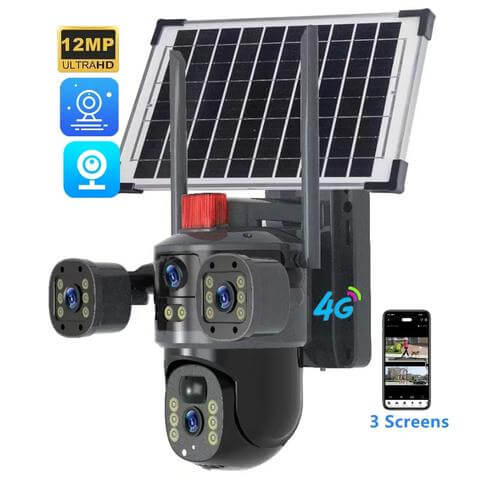Remote locations present unique security challenges where traditional surveillance systems simply cannot function. Whether you’re protecting a rural property, monitoring a construction site, or safeguarding wildlife reserves, the absence of reliable power and internet connectivity creates significant gaps in security coverage. 4G solar cameras provide complete surveillance independence by combining cellular connectivity with renewable solar power. These innovative systems deliver 24/7 monitoring capabilities anywhere with mobile signal coverage, eliminating the need for electrical infrastructure or WiFi networks while maintaining professional-grade security features. As someone who has worked extensively with remote surveillance systems, I’ve witnessed firsthand how these technologies solve critical security challenges that seemed impossible just a few years ago. Let me walk you through everything you need to know about this revolutionary approach to off-grid monitoring. The global market for 4G security cameras reached $2.5 billion in 2025 and continues growing at 15% annually, driven primarily by increasing demand for remote monitoring solutions and sustainable security technologies. This growth reflects a fundamental shift toward energy-independent surveillance systems that can operate effectively in previously impossible locations.
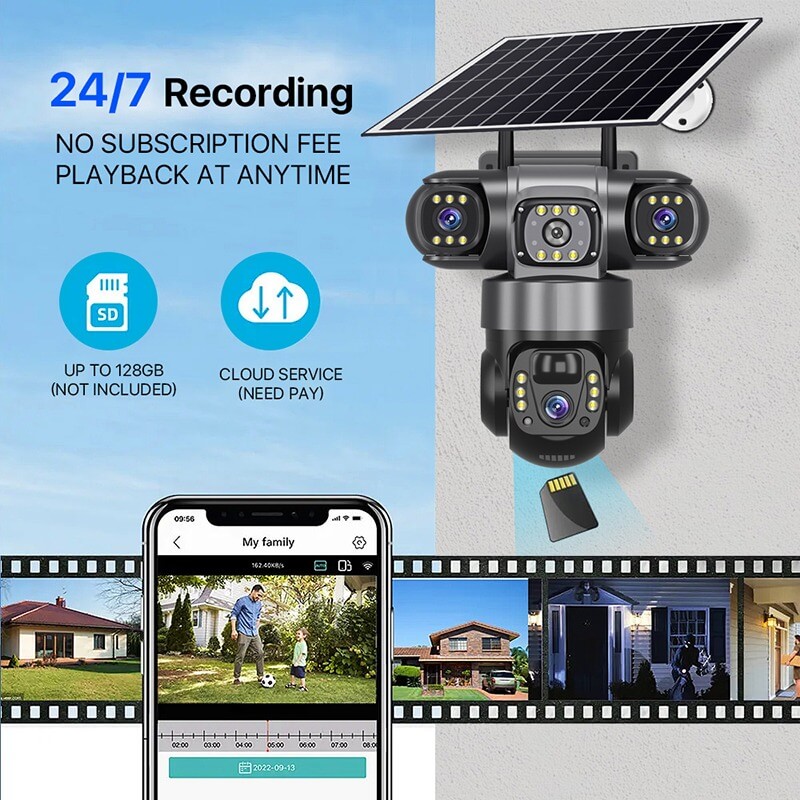
What Makes 4G Solar Cameras Work Without Traditional Infrastructure?
The beauty of 4G solar cameras lies in their ability to provide continuous surveillance exactly where traditional systems fail most spectacularly. I’ve seen countless projects where property owners needed security coverage but faced the impossible choice between running expensive electrical lines or accepting surveillance gaps.
These systems excel precisely because they sidestep infrastructure limitations entirely. While conventional cameras demand both power outlets and internet connections—luxuries that simply don’t exist in remote locations—4G solar cameras create their own ecosystem. The solar panels work tirelessly during daylight hours, converting sunlight into stored energy that powers the camera through multiple days of cloudy weather.
| Power Source | Operational Hours | Weather Dependency |
|---|---|---|
| Grid Electricity | Continuous (if available) | None |
| Solar + Battery | 3-7 days without sun | Minimal |
| Battery Only | 24-48 hours | None |
What makes this particularly brilliant is the cellular connectivity aspect. Instead of relying on WiFi networks that may not reach your property boundaries, these cameras connect directly to mobile towers using standard SIM cards. This means surveillance coverage extends anywhere with a cellular signal, which increasingly covers even the most remote locations.
The intelligent power management system automatically adjusts recording quality and transmission frequency based on available energy, ensuring critical security functions continue even during extended periods of poor weather. For comprehensive security solutions, professional installation services can optimize system placement for maximum solar efficiency and cellular reception.
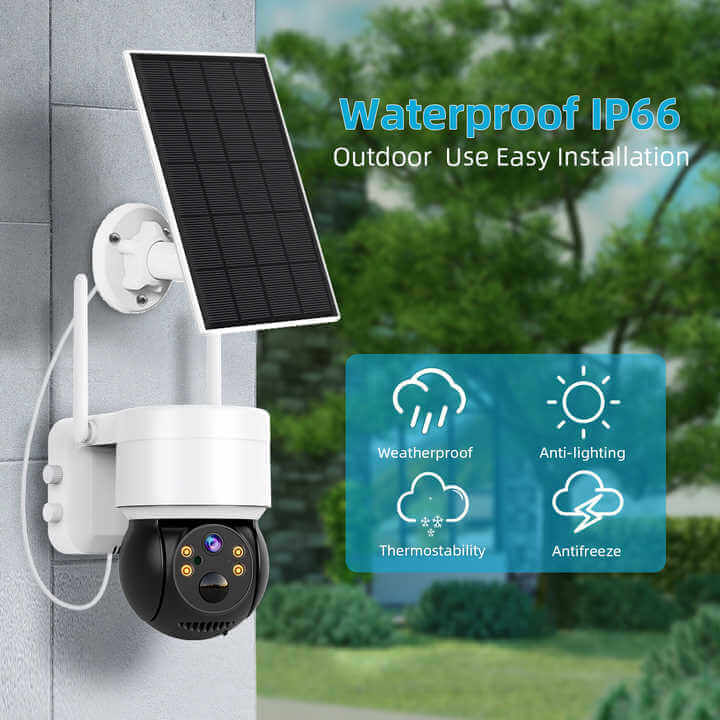
Why Is the Market Growing So Rapidly for Solar-Powered Surveillance?
The numbers tell a compelling story that explains why I’m fielding more inquiries about solar surveillance systems than ever before. The market’s trajectory from $2.5 billion in 2025 to an anticipated $7.02 billion by 2033 reflects fundamental shifts in how organizations approach security infrastructure.
This explosive growth stems from three converging forces that make traditional surveillance limitations increasingly unacceptable. First, cellular network expansion has reached previously impossible locations, enabling monitoring capabilities in areas that were surveillance dead zones just years ago. Second, environmental consciousness isn’t just trendy—it’s becoming a business requirement as organizations seek sustainable solutions that reduce operational carbon footprints.
| Year | Market Value | Growth Driver |
|---|---|---|
| 2025 | $2.5 billion | IoT integration demand |
| 2029 | $4.38 billion | AI features advancement |
| 2033 | $7.02 billion | Smart city adoption |
The third factor—total cost of ownership—surprises many clients initially. They assume solar systems cost more, but infrastructure expenses for traditional systems often exceed the entire solar camera investment. No trenching, no electrical permits, no ongoing utility bills.
This isn’t just growth for growth’s sake. Organizations across industries recognize that operational independence provides strategic advantages beyond immediate cost savings. Consulting with specialists helps identify optimal deployment strategies that maximize both security effectiveness and return on investment while supporting sustainability goals.
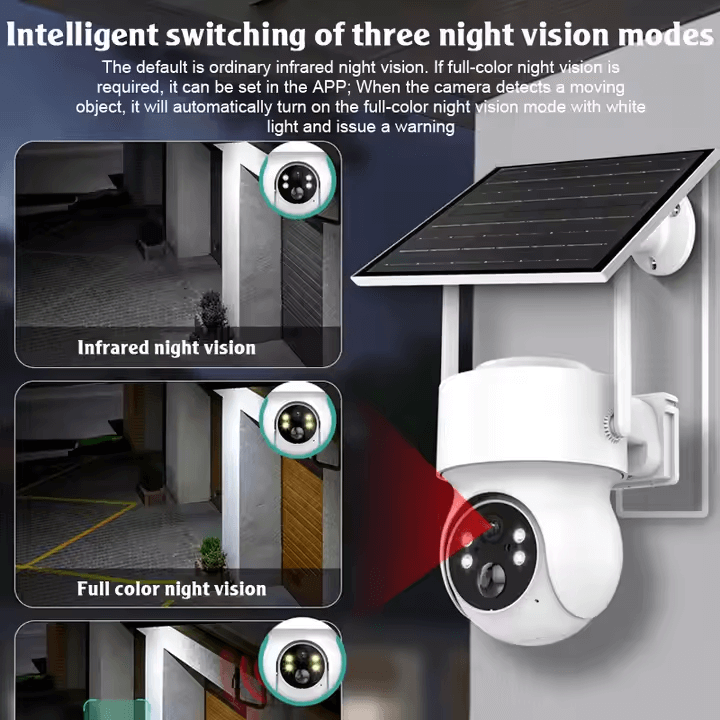
Where Do 4G Solar Cameras Provide the Greatest Value?
After years of installing surveillance systems in challenging environments, I’ve learned that certain applications showcase 4G solar cameras at their absolute best. These aren’t just convenient alternatives—they’re often the only viable surveillance solutions for specific scenarios.
Rural properties top my list because they face the perfect storm of surveillance challenges. Vacation homes, remote cabins, and sprawling rural estates typically sit beyond reliable power grids and high-speed internet coverage. Traditional surveillance would require costly electrical runs and network infrastructure that often exceeds the property value itself.
Construction sites present another compelling use case. These temporary locations need immediate security coverage without permanent infrastructure investments. Equipment theft costs the construction industry billions annually, yet running power and internet to these sites for traditional cameras makes little financial sense.
| Application | Primary Challenge | 4G Solar Solution |
|---|---|---|
| Rural Properties | No power/internet | Complete independence |
| Construction Sites | Temporary locations | Immediate deployment |
| Agricultural Operations | Large coverage areas | Flexible positioning |
| Wildlife Conservation | Remote monitoring | Environmental durability |
Agricultural operations benefit tremendously from flexible camera placement across vast properties. Livestock monitoring, crop protection, and perimeter security require surveillance points that traditional systems simply cannot reach cost-effectively. Professional installation services help optimize camera placement for maximum coverage while ensuring reliable solar exposure and cellular connectivity in these challenging environments.
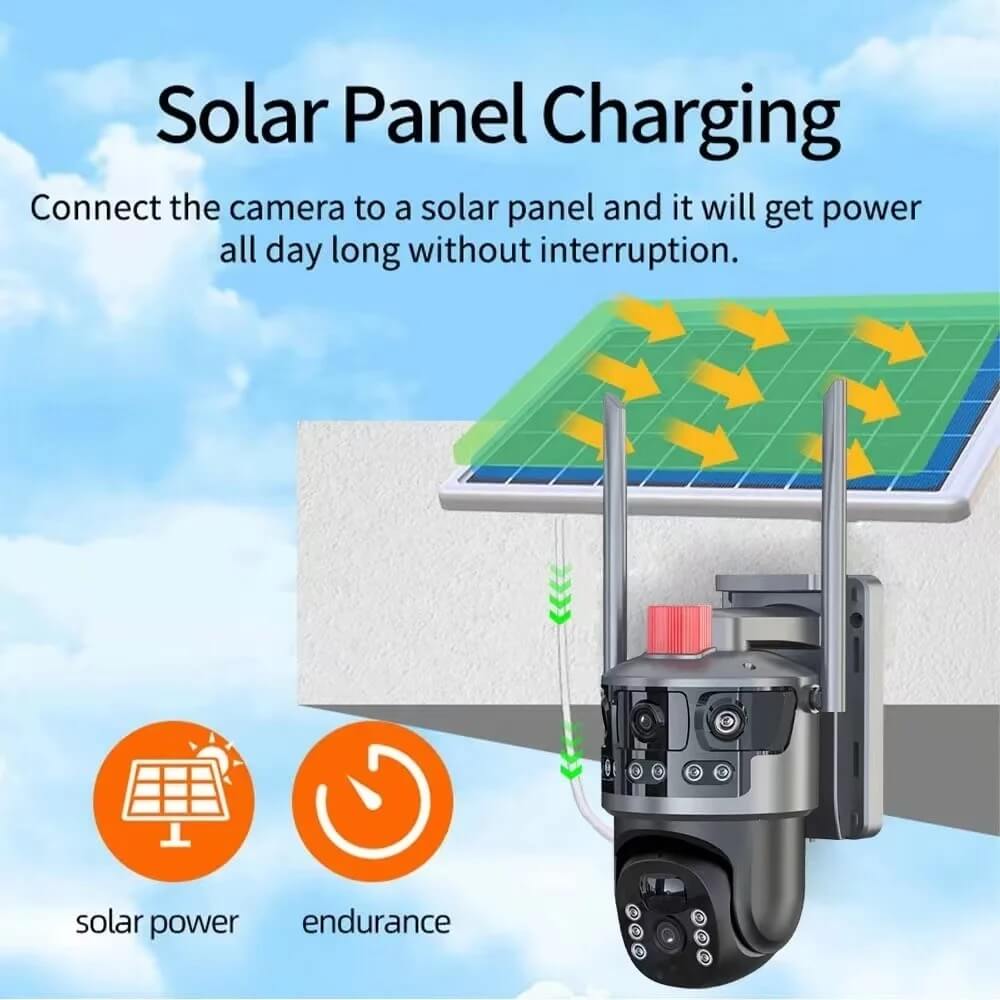
What Technical Features Set Modern 4G Solar Cameras Apart?
The technical sophistication of modern 4G solar cameras often surprises clients who expect basic functionality from battery-powered devices. These systems now deliver professional-grade capabilities that rival traditional wired installations while maintaining complete operational independence.
Video quality represents the most dramatic advancement, with leading models capturing full 4K resolution that provides crystal-clear identification details. Advanced image sensors automatically adjust to varying lighting conditions, ensuring consistent footage quality throughout the day. Infrared capabilities extend surveillance into complete darkness, while intelligent compression algorithms maintain video clarity even during power conservation modes.
AI-powered analytics transform these cameras from passive recording devices into intelligent security systems. Motion detection algorithms distinguish between genuine security threats and false triggers like swaying branches or small animals, dramatically reducing nuisance alerts while ensuring real security events receive immediate attention.
| Feature | Capability | Benefit |
|---|---|---|
| Video Resolution | 1080p to 4K | Clear identification |
| Battery Autonomy | 3-7 days | Weather independence |
| AI Analytics | Object recognition | Smart alerts |
| Storage Options | Local + Cloud | Redundant backup |
Power management systems intelligently balance performance with energy conservation, automatically adjusting recording quality and transmission frequency based on available solar input and battery reserves. This ensures critical surveillance functions continue even during extended cloudy periods. Professional consultation helps optimize these technical features for specific monitoring requirements and environmental conditions.
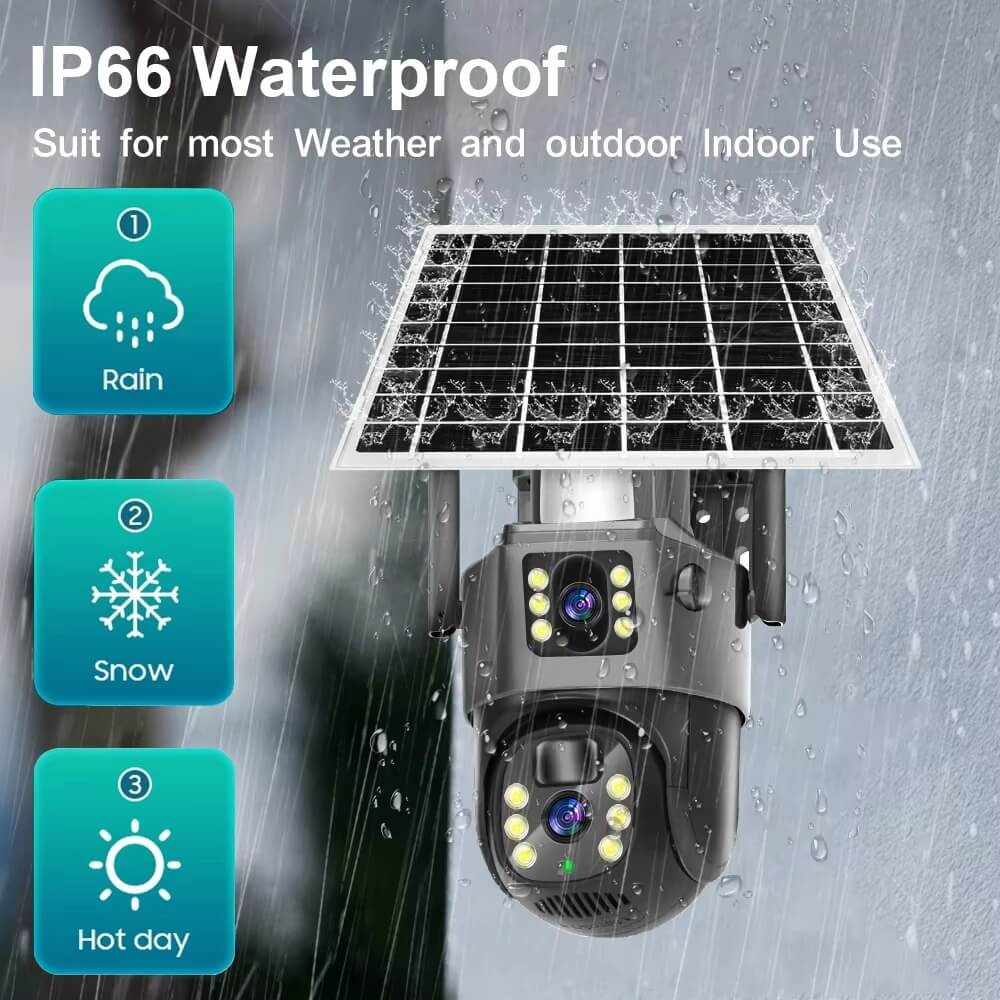
How Do Data Usage and Reliability Concerns Affect Real-World Performance?
The two biggest concerns I hear from clients considering 4G solar cameras are data costs and weather reliability—both fears that turn out to be largely unfounded with modern systems. Let me share what actual deployment data reveals about real-world performance.
Data consumption typically ranges from 1 to 2 GB per month for motion-activated systems, making operational costs surprisingly predictable. This modest usage stems from intelligent optimization features that upload only essential footage rather than continuous streams. Motion-triggered recording means cameras transmit short clips only during actual events, while scheduled check-ins provide status updates without the constant drain of data.
The reliability question deserves serious attention because nobody wants surveillance gaps during critical moments. Modern lithium batteries provide 3-7 days of autonomous operation without solar input, while intelligent power management automatically scales camera functions during extended cloudy periods. The system prioritizes essential security functions over convenience features during power conservation modes.
| Performance Metric | Typical Result | Reliability Factor |
|---|---|---|
| Monthly Data Usage | 1-2 GB | Predictable costs |
| Battery Autonomy | 3-7 days | Weather independence |
| System Uptime | 99%+ | Match wired systems |
Real-world performance data from properly configured installations shows 99%+ uptime across diverse environments. This reliability matches traditional wired systems while offering superior deployment flexibility. Professional system configuration ensures optimal performance by balancing data usage, power consumption, and surveillance requirements for specific applications.
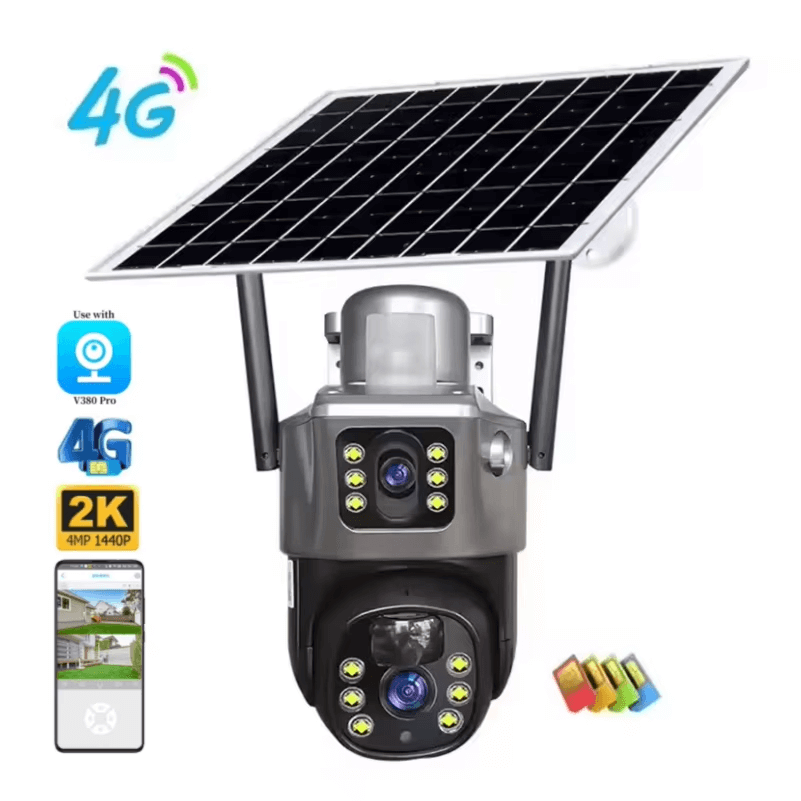
Conclusions
4G solar cameras represent a fundamental advancement in surveillance technology that solves critical infrastructure limitations while providing professional-grade security capabilities. The combination of cellular connectivity and solar power creates truly independent monitoring systems that can operate effectively in any location with mobile signal coverage. As someone who has implemented these systems across diverse applications, I can confidently say they deliver on their promise of reliable, cost-effective remote surveillance.

